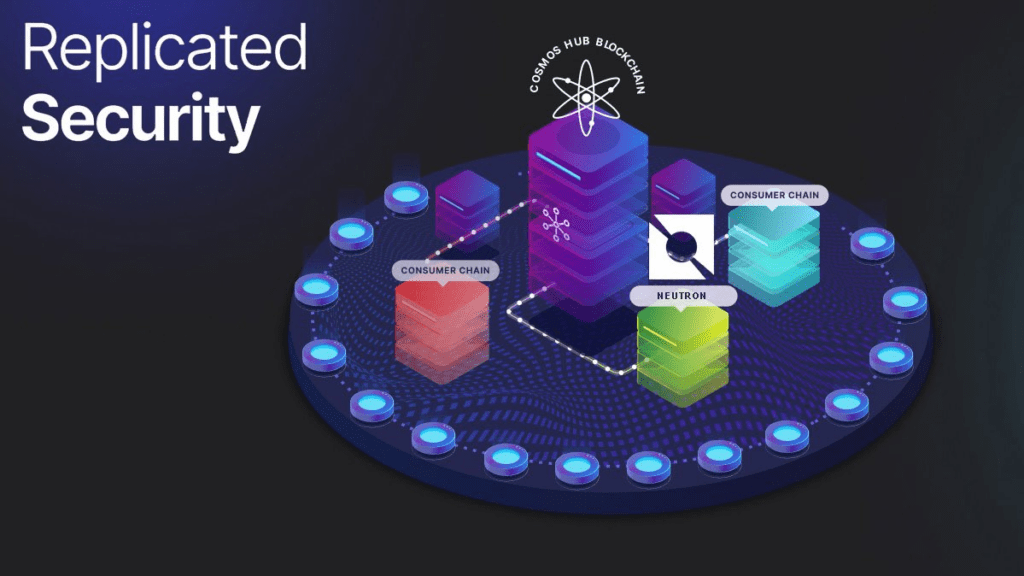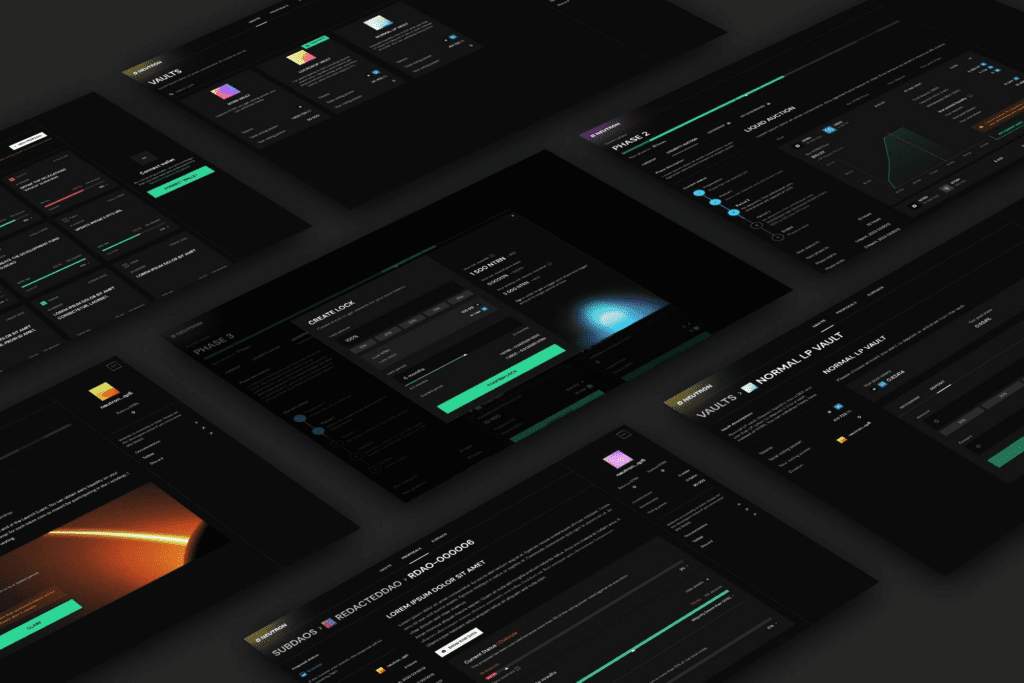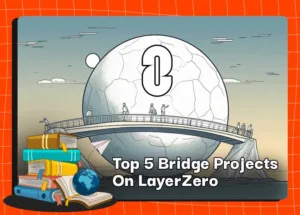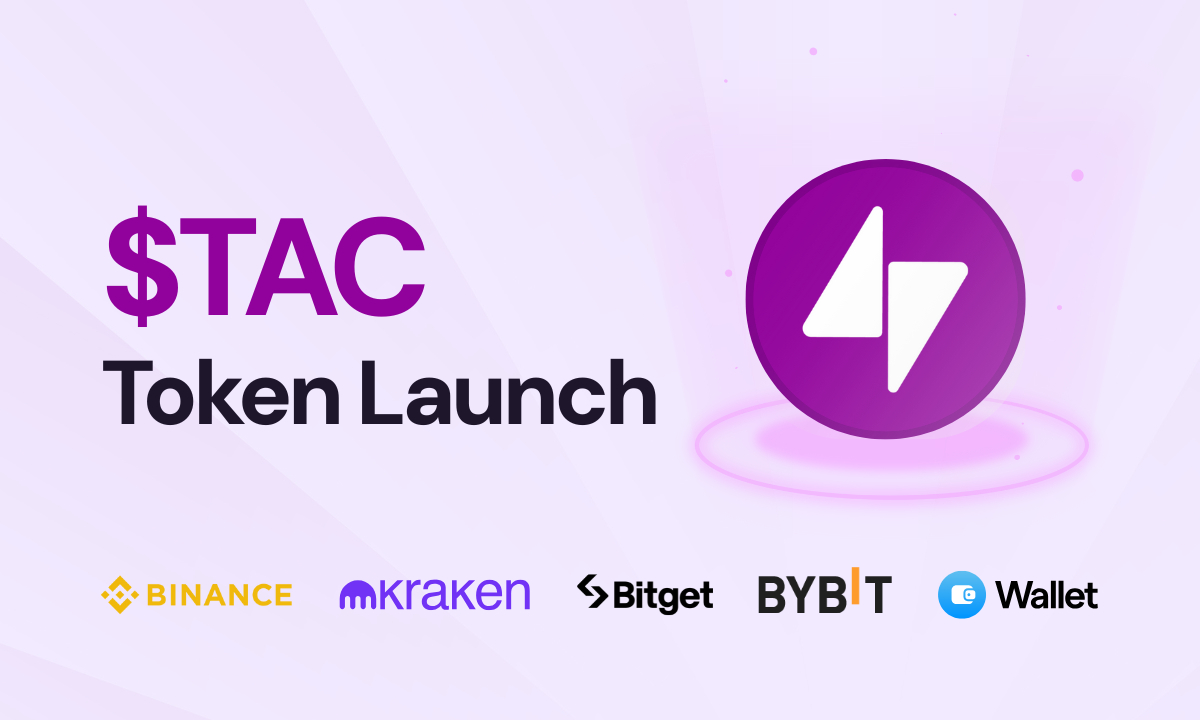Key Points:
- The first Cosmos blockchain using Replicated Security, Neutron, has been launched.
- Replicated Security is the first version of the Interchain Security (ICS) feature on Cosmos, allowing blockchains in the ecosystem to share authentication resources for improved security.
- The implementation of ICS allows the consumer chain to focus entirely on developing the network economy.
Neutron, the first Cosmos blockchain to incorporate scaling security, was released earlier this month. Blockchains in Cosmos may rely on a group of validators in Cosmos Hub for security, thanks to duplicated security.

Cosmos Hub, the Cosmos environment’s cross-chain firm, highly praised Neutron, a blockchain system built to add smart arrangements into the Cosmos system utilizing CosmWasm (Cosmos WebAssembly). Cosmos Hub held an online poll to evaluate if Neutron is ready to deploy on Replicated. Security (RS) or not after some study, hub parts, and successful testnet releases.
Neutron overview
On March 15, Cosmos Hub completed the Lambda update and officially introduced Replicated Security (RS), also known as Interchain Security (interchain security), a shared security paradigm established by Cosmos Hub.
Consumer chains are application chains that use replication security. They will no longer be required to ensure the blockchain’s security. Instead, Cosmos Hub validators will generate blocks, and these validators will also get extra Native token incentives, increasing ATOM’s value capture capabilities.
Neutron is the first consumer chain to be released with replication security. Last year, it was authorized by Cosmos Hub community proposal No. 72, and it received 50,000 ATOMs from the Cosmos Hub community pool to build Neutron as a DeFi Hub in Cosmos. Well-known projects such as Lido will also be immediately deployed on Neutron. Neutron’s primary network has been deployed, and airdrops have commenced.
It is a permissionless smart contract platform powered by Tendermint and the Cosmos SDK. Neutron will be one of the safest cross-chain smart contract platforms via replication security, with around $2 billion in ATOMs promised in the Cosmos Hub, while also allowing DeFi apps to operate on dozens of blockchain networks worldwide. Neutron went through a two-week warm-up phase before the launch event started on May 24 to assure the stability and security of the Neutron blockchain.

Bringing cross-chain growth and DeFi innovation to Cosmos
Smart contract apps on Neutron may be launched without whitelisting verification through governance voting. Neutron will become the most secure CosmWasm platform in Cosmos by using the Hub’s security. To ensure security, the Cosmos Hub will get the following from Neutron:
- 25% transaction fee;
- 25% of MEV revenue;
- 7% of NTRN supply as initial distribution;
Aids in the consolidation of ATOM’s status as a cross-chain reserve currency.
Cosmos Hub features not just the most secure Interchain community but also the biggest. More people will be able to access Neutron applications. Neutron enables Hub to grow DeFi horizontally, making it the execution layer of Cosmos Hub.
In addition to providing long-term revenue to the Hub, Neutron explains how it will assist in enhancing ATOM’s status as Interchain’s reserve currency:
- ATOM in DeFi: Neutron intends to host an ecosystem of DeFi goods based on NTRN and ATOM, hence increasing the token’s usefulness and demand. Neutron-based applications will enable the universe to supply liquidity, borrow and lend, exercise governance, sell bonds, and more. Native ATOM and liquid collateral are used. By enabling the universe to earn incentives for locking their tokens in the DeFi system, they will increase demand for ATOM while decreasing circulating supply.
- ATOM in Treasury: Neutron delivers a cross-chain architecture and a flexible execution environment to the IBC ecosystem’s enormous coffers. With the introduction of basic tools like DAODAO, Timewave, and Gitcoin on Neutron, the Hub will finally have the capabilities to establish safe, programmatic agreements with other chains, protocols, and treasuries: swaps tokens, secondary fundraising, loan agreements, deal-owned liquidity, and so on.
NTRN token
Total supply: 1 billion tokens
Neutron DAO receives 54% (tokens are retained in DAO reserves and vaults). They are essentially liquid and may only be utilized or transferred if a majority of voters agree.)
34% granted to the creative team and early supporters, locked for one year and unlocked linearly over three years (founders: locked for one year, linearly paid over three years, no voting rights during the grant period). Early backers: one-year lockout, three-year linear empowerment, vote rights throughout the grant term.
12% is allotted to the community for airdrops (tokens are distributed to the community through Neutron’s airdrop and release operations. There is an unlock period of 3 months and optional lock time, with voting during unlock time.)
Initial supply: 120 million tokens
- 70 million NTRN for airdrops, 40 million of which are granted to ATOM who commit before 2022-11-19 and 30 million to customers who participated in Proposition 72. Tokens acquired will have a three-month unlock period beginning 9 days after the site goes online.
- Second phase: Within 5 days after receiving the airdrop, 40 million tokens will be distributed.
- Third Stage: The LP of the second stage may be frozen for a year to get an extra 10 million NTRN.
The above-mentioned first allocation procedure is projected to take 9 days.

Benefits of Neutron
Although Cosmos has its own traffic and market value, which may assist with project participation, operating the full Cosmos chain is incredibly complicated, and only those who join the core know how to manage it. Most users have been discouraged from joining since, although the processing price is low in comparison to the BTC ecosystem, it is considerably more burdensome than the BRC-20 and Ordinals that are popular today.
This is also why, with the Replicated Security update, the integration of DYDX and the launch of Neutron’s mainnet is so critical. DYDX, as the market leader in derivatives, has substantially countered the demand for derivatives. It also addresses difficulties that are tough to operate and time-consuming for regular users.
The cosmos790 proposal is also used to update the LSD module. There is also a buzz story about the Cancun refurbishment in the second part of the year.
Conclusion
With the explosion of L2, the Cosmos ecosystem seems to be exceedingly lonely. Neutron has attracted a lot of interest with the emergence of the ATOM 2.0 integrated era. It could, in principle, address the concept of a unified front in the universe while also introducing new storylines and flywheels to ATOM 1.0. It also tackles Cosmos’ fatal flaws: tedious transactions, complicated operations, and only key participants understanding how to work.
The application chain in the Cosmos ecosystem will no longer manage the blockchain’s security thanks to Replicated Security, and the Cosmos Hub can also increase ATOM’s value capture potential. With the launch of the first application chain, Neutron, and the commencement of airdrops, projects such as Lido will be immediately deployed on Neutron, and the Cosmos ecosystem may attract greater attention.
DISCLAIMER: The information on this website is provided as general market commentary and does not constitute investment advice. We encourage you to do your own research before investing.
Join us to keep track of news: https://linktr.ee/coincu
Harold
Coincu News























